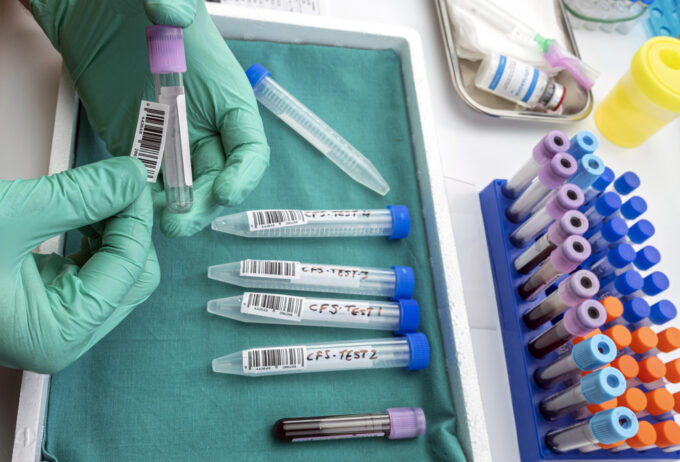Glove warns of toxic substances
A newly developed glove lights up when it comes into contact with toxic substances or pathogens. This could improve occupational safety for medical personnel in the future.

Doctors and laboratory technicians will be able to work more efficiently thanks to a Massachusetts Institute of Technology (MIT) glove will be warned in good time if they come across toxins or pathogens. The fingertips then light up brightly. The gloves resemble the thin latex gloves that housewives put on when cleaning windows or other surfaces.
"Living Material"
According to the researchers, the special fabrication consists of "living material," an elastic hydrogel into which they have imprisoned genetically engineered microorganisms. These have two abilities at once: When they detect pollutants, they begin to phosphoresce. The MIT researchers have made several types of gloves. One version is made of latex. Only the fingertips are covered by living material. Bandages that detect changes in the skin are also feasible.
The hydrogel can be loaded with engineered bacteria that react to different pollutants and pathogens, says Timothy Lu, a lecturer in biological, computer and engineering sciences at MIT. In a sense, he says, it's an early warning system. Until now, such manipulated microorganisms as the bacterium Escherichia coli have only been grown in Petri dishes in the laboratory.
Moist hydrogel skin
The MIT researchers' task was to ensure that the bacteria find moisture and nutrients in the hydrogel skin. Some also need oxygen. At the same time, the experts had to prevent the microorganisms from escaping. Some researchers use freeze-dried microorganisms that they fix in paper strips. But their sensitivity to pollutants is far lower than that of living cells.
The solution is a hydrogel that is 95 percent water, yet flexible and tear-resistant like a latex glove. A team of practitioners finally set about fixing the manipulated microorganisms in it. It opened the finest channels in the material into which the cells diffused. Finally, it landed in a nutrient solution that was absorbed by the hydrogel.
First, the MIT scientists made a film with four channels into which they filled microorganisms that lit up green when they came into contact with a certain chemical. Finally, they transferred the bacteria-filled film to a glove. They doped each fingertip with a different type of bacteria, creating a sensor for various pollutants and pathogens.
Source: Press release









